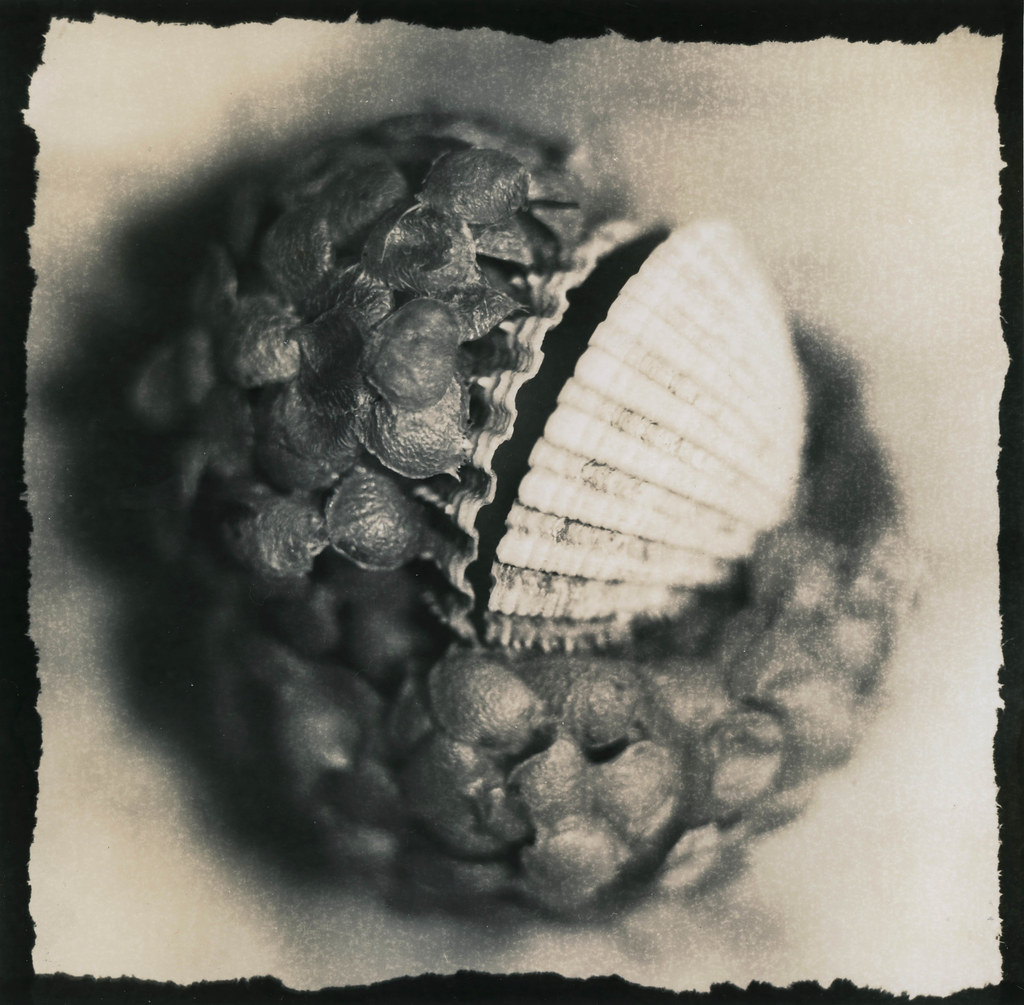Most of the time
when I go into the darkroom I have a pretty good idea of what I want to
achieve. This isn’t really due to any
forward planning or meditation, I just can’t get in there as much as I would
like and so I tend to have a few days between sessions where I can be thinking
about what I want to do with certain negatives.
So when I went into the darkroom last week I knew what I wanted to do
with my latest negative.
I had taken Ellie
(our dog) for a walk on the beach with Jess earlier in the week. The tide was out so there were small pools
everywhere filled with starfish, crabs, shells and seaweed. As I had a few doggy poo bags in my pocket I decided
to fill one with various shells and things from the beach so I could shoot some
still life (I hadn’t shot any film in ages and I was starting to get
twitchy)! So I filled my bag, tired out
the dog and headed home.
The next day I setup
my new Bronica body (yes, I replaced the broken one at last) on my new tripod,
setup some lights and got shooting. I
used the S-36 extension tube to get up nice and close, then added close up
filters where necessary. Side lighting
came from a table lamp shining from above and slightly to the right of “the
subject”. I used the auto prism I had
received with my new body for exposure as I (shamefully) couldn’t be bothered
spot metering it.
Once done I loaded
the film into the tank and mixed up my chemistry. I developed the Pan F+ for 15 minutes in ID11
1:3, stopped, fixed and washed as usual.
Unfortunately the negative came out very thin indeed. I’m assuming the developer stock solution had
expired as I mixed it up about a month and a half ago, but maybe the auto
metering wasn’t up to scratch; I don’t see why though as it was a very low
contrast scene. I don’t really use ID11
so that’s my excuse, I should have just stuck to Rodinal but I didn’t want to
waste chemistry. That’ll teach me!
So, with dry negative
in hand I entered the darkroom. I
started, as usual, by making a contact sheet; I’ve been doing that a lot more lately
as it’s a good practice to get into. I
could see from that that there were only two or three frames I liked enough to
print so I loaded the first and made a test strip. After fiddling with contrast filters and exposure
times I settled on Grade 4 at 4.00 seconds on Kentmere VC Select. That’s a tiny amount of exposure. Normally my base exposures are in the 18
seconds mark at grade 3, so you can see just how thin the negative was! Fortunately, for this frame, all the detail I
wanted was recorded on the negative.
What I had planned for
this negative was some second pass lith. If you’re not familiar with it please
see here.
Basically you overexpose a print, bleach it back as far as you like then
put it into lith developer. So, I made
my overexposed base print as described above:
Then I bleached it
back until the border shadows were just starting to be affected:
Then I redeveloped
in lith, stopped and fixed as normal.
What I found interesting is that the print did not redevelop as much as I
thought it would. Theoretically the
print should just keep developing until it is all black, but this print didn’t
and I’m not too sure why. I haven’t
really done much experimentation with second pass lith, I really should devote
more time to it.
So here is the final
print. Note I didn’t get the usual greys
and pinks with this paper, but a paler grey and some yellowy highlights which,
although unexpected, are still pleasing to the eye:




No comments:
Post a Comment